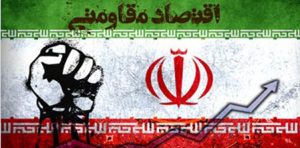The American Dream, which is a national philosophy of the American people as described by James Truslow Adams, in his book The Epic of America (1931), is
“…a set of ideals that includes the freedom for opportunity for prosperity and success, and an upward social mobility achieved through hard work.
However, the definition of the American Dream has evolved over the years. For example, in the 19th century, Germany immigrants (to the US) spoke of the DREAM as such, “In such a country the talents, energy and perseverance of a person … have far greater opportunity to display than in monarchies.”
Then with the advent of the California Gold Rush in the late 19th century the dream changed from “hard work equals a good future” to a capitalistic view, “…the dream of instant wealth, won in a twinkling by audacity and good luck.” So in the 19th century, American immigrants who had left their home countries initially in search of freedom evolved into capitalists searching for wealth and power in the new world. This was the first step towards the present day American Dream of consumerism.
In the 20th century the definition changed back to one of freedom and development in part because of World War I & II, “…that dream of a land in which life should be better and richer and fuller for every man, with opportunity for each according to his ability or achievement… a dream of being able to grow to fullest development as man and woman.” This was in stark contrast to Europe, who at the time was dealing with communism, socialism, and fascism.
However, in the late 20th century, due to a booming economy and the strong growth of consumerism the definition once again changed to one of consumerism and has remained to now.
The Four Dreams of Consumerism
۱. The Dream of Abundance
According to Ownby (1999), “The first was the ‘Dream of Abundance’ offering a cornucopia of material goods to all Americans, making them proud to be the richest society on earth.”
۲. The Dream of a Democracy of Goods”
The second was the “Dream of a Democracy of Goods” whereby everyone had access to the same products regardless of race, gender, ethnicity, or class. This in turn challenged the aristocratic norms of the rest of the world wherein only the rich or well-connected were granted access to luxury.
۳. Dream of Freedom of Choice
The “Dream of Freedom of Choice” with its ever expanding variety of goods allowed people to create their own particular lifestyle.
۴. Dream of Novelty
Finally, there was the “Dream of Novelty”, in which ever-changing fashions, new models, and unexpected new products broadened the consumer experience in terms of purchasing skills and awareness of the market, and challenged the conservatism of traditional society and culture, and even politics.
Hence, today in the 21st century, the American Dream has become even more about material objects and so nowadays, consumerism, making a lot of money, fame, equality, and succeeding professionally are the norms of the American Dream.
The Global Impact of the American Dream
A Democracy of Things
Upward mobility, which is a part of the American Dream, has been systematically spread to other nations since the 1890s by American missionaries and businessmen religious missionaries, philanthropies, Hollywood, labor unions and Washington agencies. “They linked mass production, mass marketing, and technological improvement to an enlightened democratic spirit and the American Dream …” says Rosenberg. Note that “upward mobility” is the capacity or facility for rising to a higher social or economic position.
So, “by the latter half of the twentieth century they were truly global and through them the American Dream continues to be transmitted, repackaged and sold by an infantry of consultants and academics backed up by an artillery of books and videos.”
After World War II
After the devastation of the two World Wars, western European and even Asian countries began dreaming of a better life, such as that offered by the American Dream. So the groundwork for desiring the American Dream grew and so did immigration to the USA. For those that stayed in their own countries, democratic movements grew, such as the French feminist movement, liberalism in Eastern Bloc countries, and so on.
Home ownership also became a part of the American Dream and it took many shapes in various countries. In the 1980s, the British Prime Minister Margaret Thatcher used this aspect of the American Dream to introduce her plan of helping Britons become home owners.
Moreover, since the fall of Communism in the Soviet Union in 1991, the American Dream has fascinated Russians. The newly independent Russian media idealized America and endorsed American solutions to its problems. Boris Yeltsin embraced the “American way” and teamed up with a Harvard University free market economists to give the Russia economy shock therapy in the 1990s. In 2008 Russian President Dmitry Medvedev introduced “the Russian Dream that also planned to increase Russian home ownership” The Chinese Dream was introduced by the new Chinese leadership in 2012-2013. It has been promoted by the Chinese government, its news media and entertainment industry towards individual self-improvement in the Chinese society. The concept of the “Chinese Dream” is very similar to the idea of the “American Dream”. It stresses entrepreneurship and glorifies a generation of self-made men and women in post-reform China. Moreover, this DREAM has also encouraged Chinese rural immigrates to move to urban centers and achieve magnificent improvements in terms of their living standards, and social life.
In conclusion, although the American Dream looks very attractive and satisfactory as far as material needs, in today's societies that embrace the consumerism of the DREAM, whether it be American, Chinese or so on, the noble values of humanity and divinity are lacking and this is evident in its own statistics and reports and this weighs heavily on the minds of those who value morals and religion.









